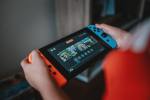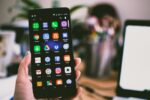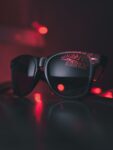Interview with Luca Sarcina, CEO of Geek Forge

May 31, 2022
Interview with Luca Sarcina, CEO of Geek Forge, the innovative startup that develops ideas designed to facilitate everyday life.
Among the many habits that the pandemic period changed, for many people there was the way to work and study, with the introduction of smart working and distance learning. Workers and students suddenly found themselves hyper-connected, forced to spend several hours a day between meetings and groups on platforms such as Zoom or Skype. Sometimes the concentration has not favored the work or study of those who remained at home, people who in most cases used to use “makeshift” tools, making the organization of daily activities extremely complicated. From today, however, everything can be easier thanks to Geek Forge!
What about Geek Forge
Through a modern research process, Geek Forge develops ideas that facilitate our daily lives. From smart working, to distance learning (dad) up to sport, the platform contributes to beating the IT and generational barriers through high-quality technological tools. E-DESK, for example, is the innovative hardware device patented by Geek Forge for video communication and web collaboration.
A single computer device that brings together a microphone, jack for audio output, and two webcams. The two webcams can be rotated to show two different spot, such as the interlocutor and the desk for example.

E-DESK is also very secure, against any type of cyber attack! The connection to the single elements is interrupted through the pression of a button and with the LEDs it is possible to see which elements are active.
Items can then be turned on and off at will, to maintain the level of privacy you want at any time.

To learn more about this new reality, we interviewed Luca Sarcina, CEO of Geek Forge
Hi Luca, thank you so much for this great opportunity. It is such a pleasure to meet you. Tell us more about Geek Forge.
Hello, it’s my pleasure, and thank you for this opportunity!
What can I say, you have already done a great introduction. I can add that we are a group of friends, before being colleagues. I have known Veronica and Marco for many years, and Roberto (our CTO) and I , in particular, have been university friends. We have often found ourselves with ideas of technological products that applied existing devices in completely new applications: from bioengineering to energy, up to wearable devices. Through the startup we try to encompass this creative energy to products that can help people, so that technological innovation could be accessible truly to everyone.
How and when did the project idea come about?
This is an interesting story, which has certainly reappeared in many cases: March 2020, full pandemic period of COVID-19. From one day to another we were catapulted into the midst of DAD, Smart Working and the simple activities that we used to do live has been transformed by obligation.
My mother is a math teacher, next to retirement, so she called me, the family engineer, saying: “Luca, you have to fix my webcam that doesn’t work because I have to do a distance lesson tomorrow”. My mother is a great teacher, but she doesn’t have the IT confidence of my generation, so the driver updates, the installation of some specific software and the preparation of the graphics tablet were complicated aspects for her. As with her, in a few days I received the same assistance request from many other people, and to give another example even very young children, attending primary school: the day before their typical activity at school was to make a drawing, from the next day they were supposed to know how to follow remote lessons on PC.
We asked ourselves: “But is it possible that there is no simple tool, plug-n-play, that through a single USB port allows you to connect it, and have all the necessary resources for these tasks? The answer, paradoxically, was no.
How did you launch your startup? Did you use crowdfunding campaigns?
The startup was born in 2020, and was realized at the beginning of 2021. In September 2020 we participated in the “Switch 2 Product” competition proposed by the Politecnico of Milan, being selected at the first skimming among hundreds of different projects. There, despite not having passed the second selection, we were advised to protect our idea patent and to carry it through other channels. So, thanks to Invitalia’s 3I vouchers, we applied for the industrial privatization patent and started to contact different suppliers for the industrialisation and the subsequent industrial production process.
We haven’t launched crowdfunding campaigns yet, but we could do so in the short term to boost the first batch of production.
How does E-DESK stand out from the usual web video communication software?
I can start by saying that E-DESK is not a software, but a hardware: in one device we have two adjustable, high resolution and autofocus webcams, a directional microphone, and an audio output. Everything feeds and transmits data directly with a single USB cable. It is compatible with both Windows and Mac, and can be used with all the software for online communication on the market (Skype, Meet, Teams, Zoom, etc.); while expressing its maximum potential in those that allow more than one video input at a time.
What makes E-DESK a highly reliable tool in terms of privacy and cybersecurity?
To answer you, we can compare our solution with others already available on the market: laptops and computers with devices for online communication. In the case of a portable PC, even Mark Zuckerberg, well-known founder of Facebook, and James Comey, FBI director, have declared to cover their webcam with post-its to make sure they are not observed, with the obvious limits that a post-it can have (you have to remember to put it and remove it every time, it could come off, it could only partially cover the lens, etc.). On some newer models of laptop there is a kind of shutter, to avoid post-it, but it remains a mechanical block. Moreover, clearly, these solutions do not disable microphones, which therefore remain available to a possible cyber attack.
Speaking instead of a fixed PC with webcams and microphones, we are all aware that they should be connected only at a stage of real need, but let’s be honest: how many of us connect and disconnect each time such devices, whose attachment is often in the back area of the desk? The result is that both webcam and microphone are always available to potential hacker intrusions.
At the end, I add that privacy is not at risk only for external attacks: how many news we have heard in the last two years of professionals who, not having noticed that the webcam or the microphone were turned on, during meetings, meetings or calls of all kinds have performed “inconvenient” or inappropriate actions?
E-DESK deliberately has a simple analog control panel, with a button for each function, with a LED light turned on only if a single device is enabled and works. If the light is turned off, on the contrary, the component is completely de-energized in a hardware way: not only it does not work, but it cannot be activated remotely in any way.
Goals for the future?
Certainly many! Let’s say that from the birth of the idea to today we have encountered many difficulties, more than bureaucratic techniques. Last but not least, the international crisis of the electronics market, which is making us the challenge even more difficult. However, we have no intention of giving up, and our current objective would be to be able to bring E-DESK into the ongoing digitalization project, both in the workplace and at school institutions, in order to help people who might have a benefit.
I would like to add briefly that we are also working on other projects, such as Geek Forge, but which do not concern E-DESK. Among these, environmental devices for the reduction of CO2 in the perspective of circular economy, and recently we launched a second innovative startup oriented to web3, in the world of NFT, with established partners in the field, But I can’t anticipate you more at the moment.
Curiosity: would you like to tell us some facts about the final choice of the name?
The choice of the name was relatively complicated (being us creative of a more technical than communicative nature), but it was oriented on something that had a meaning for us. The term “Geek”, initially used by people in a derogatory way but now cleared by customs, refers to someone particularly fond of technology, science and a bit outside the box: in Italian it would be considered as a mixture of “nerd” and “loser”. I don’t need to explain why in a team with three engineers you find yourself easily in that description.
“Forge” instead refers to the place where ancients gave shape to the metal, creating what the technique of every era allowed: from spikes to swords, from gates to gun barrels. From the union of these two terms, in English to emphasize our wide-ranging cultural and market opening, we get something like “The forge of a technology enthusiast”, which can well summarize what we do.
Credits:








